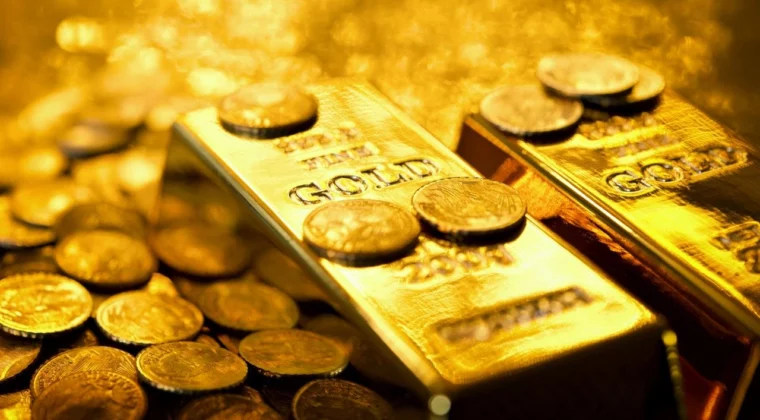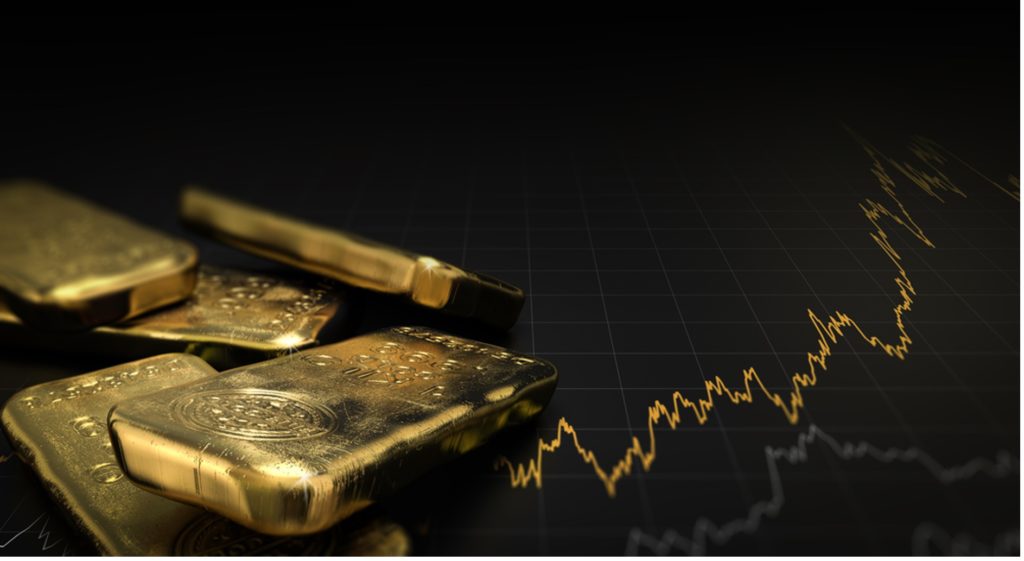-
- Trading Platforms
- PU Prime App
- MetaTrader 5
- MetaTrader 4
- PU Copy Trading
- Web Trader
- PU Social
-
- Trading Conditions
- Account Types
- Spreads, Costs & Swaps
- Deposits & Withdrawals
- Fee & Charges
- Trading Hours

Gold has been used as a store of value for thousands of years. Even today, it remains a highly liquid asset, with hundreds of billions worth traded every day.
Content:

This might seem like a question with an obvious answer, but what exactly is gold, and why is gold traded? Everyone knows that gold is a precious metal that has been used as a value for thousands of years. There are many reasons for gold’s popularity, including its scarcity and physical properties. Gold might be rarer than common metals like iron or copper, but is not so rare that the supply would not be enough for it to be used as currency.
Secondly, gold’s physical properties make it attractive to people holding on to it. Gold is unreactive and does not corrode like iron or copper does. Its relatively low melting point makes it easy to work with, while its weight makes it feel substantial – something that mattered especially when gold coins were commonly used as currency in the past.
In fact, even with the introduction of paper money for much of modern history, the gold standard has been used. This is where the value of a currency is pegged to the amount of gold held in reserve, and where paper money can be freely exchanged for a fixed amount of gold. The end of the gold standard came when US President Nixon stopped the convertibility of gold with the US dollar (at a fixed rate of US$35 per troy ounce), effectively ending the Bretton Woods agreement.
That said, many sovereign countries like the US and Germany still hold large amounts of gold in reserve, and trading gold remains very popular, especially with the advent of online trading.
How are gold rates decided? Because gold plays many roles – including as a store of value, a commodity, a hedge against inflation – many factors affect its price. These range from a country’s macroeconomic data, to the rate of gold production.
Economic growth: Beyond trading, gold has practical applications like its use for jewellery and technology, the demand for which rises in times of economic growth. For jewellery, this is especially true in countries like China and India, where a rapidly-expanding middle class has largely driven demand for jewellery and consumer electronics. In 2021, the combined demand from jewellery and tech came in at over 63%. Economic growth also fuels demand for physical bullion in the form of gold bars and coins for long-term holding.
Opportunity cost: Gold does not pay dividends or interest rates, and is considered a non-yielding asset. Holding gold therefore incurs an opportunity cost because the money can be put into a yielding asset like bonds or a REIT. This is usually affected by monetary policy as mentioned above. Therefore, in times of low-interest rates, investors will usually turn to the precious metal. At the same time, because gold is denominated in US dollars, a weaker dollar (due to low interest rates or easy monetary policy) will also attract gold buyers using a foreign currency; or investors looking to hedge against a weakening dollar.
Supply: The total supply of gold, or how much elemental gold there is in the entire world, is finite. Outside of extremely costly and impractical methods involving nuclear reactions or a particle accelerator, all the gold in the world will be limited to whatever we can mine. This is a process that gets more difficult and expensive as more gold is mined. As of 2022, there is roughly 201,300 tonnes of gold above ground with an estimated value of US$11.78 trillion. According to the World Gold Council, the industry with the largest demand for gold is jewellery, accounting for over 50% of global demand. This is followed by the demand from investors, gold traders, and central banks – the US is the largest holder of gold at over 8133 tonnes, followed by Germany’s 3355.
Market uncertainty: Gold is traditionally seen as a safe-haven asset. This means that in times of upheaval and market uncertainty, like during a war or large-scale natural disaster, investors will flock to gold for its stability. For example, Russia’s invasion of Ukraine in early 2022 saw gold prices soar from the $1800 region to around $1990.

One of the biggest reasons why trading gold is popular is because of its liquidity. For 2021, the daily average gold trading volume was over US$130 billion a day – a volume that’s on par with short-term US Treasury notes and more than twice the combined volume of all constituent stocks in the Dow Jones.
Thanks to its reputation as a popular hedge against inflation, gold sees a large volume originating from hedging activity from institutional traders who trade gold alongside currencies and bonds according to the prevailing risk sentiment.
Finally, investing in gold for the long term is a recognised way of diversifying a portfolio, especially in preparation of volatile, uncertain times.
<h3 id="How"?4. How To Start Trading GoldThere are multiple ways to gain exposure to gold to benefit from gold’s price movement. The most straightforward way is to spot gold trading, where the asset is bought or sold and almost immediately settled without taking an allocation of physical gold. The spot price of gold denotes the current buy and sell values, as opposed to an agreed-upon price in the future.
Trading spot gold usually entails opening an account with a broker that offers the precious metal as one of its products. Spot gold can be traded with Contracts for Differences, which grants several advantages like the use of leverage, which allows you to amplify your position in gold and start trading with less capital.
Exchange-Traded Funds (ETFs) and shares: Gold ETFs have gold as their underlying asset. They can hold gold, or manage gold futures contracts, and can be leveraged, inverse (meaning that they are shorting gold), or both. Examples include the SPDR Gold MiniShares Trust (GLDM), which currently has $4.7 bn AUM.
There are also ETFs and shares that invest in gold-mining companies, which give amplified exposure to gold prices due to mining costs. For example, if an oz of gold is $1600 and costs US$800 to mine, an increase in gold price to $1800 would mean an increase of 25% in profits from a 12.% increase in the price of gold. The closer the cost of mining is to the price of gold, the more sensitive profits become to fluctuations in the price.
Gold Futures: These are contracts between two parties that agree on the delivery of gold for a fixed price at a particular point in the future. While gold futures primarily exist for parties – especially in industries that require gold – to hedge against price fluctuations, many also speculate on, and trade gold futures contracts as they are leveraged positions, which allows traders to take their capital further at the cost of larger risks.
Gold futures are almost always priced differently from spot prices due to the cost of carry (overnight fees or rollover) and the interest rate differential between USD – which gold is denominated in – and gold, which can be leased.
Physical Gold: Also known as bullion, physical gold exists in various forms like gold bars. There are also gold coins like the American Eagle, which are minted and distributed by sovereign governments, and rounds, which are released by private mints.
Taking physical delivery of gold is less popular as it comes with additional costs including storage, insurance, delivery, and security. However, people still buy physical gold for several reasons:

Trading with a CFD broker like PU Prime allows you to make use of leverage, which allows you to take on a larger position with less capital. A leverage of 500:1 on XAUUSD (gold vs US dollar) for example, allows you to trade $100 x 500 = $50,000 worth of gold for just $100. Any price movement would consequently be amplified accordingly – should the price of gold increase or decrease 0.1%, you would make or lose $50 respectively.
The standard size of 1 contract of gold, or 1 lot of gold, is 100 troy ounces, or 100 oz.
Most brokers charge a swap, or rollover fee, to hold a position in gold overnight. This represents the cost of holding the position, derived from the interest rate differential between holding gold, and USD, which gold is denominated in.
One of the primary difficulties for traders deciding what is the true factor that is moving the price of gold. This is because there might be many factors – both push and pull – affecting gold prices.
For example, investors that believe gold to be a hedge against inflation will turn to it during times when consumer prices are high.
However, high inflation will also prompt a popular inflation-fighting tool that central banks like the Federal Reserve use – raising the interest rates of banks borrowing from it, or each other. High interest rates, meanwhile, turn investors away from gold because it is a non-yielding (doesn’t pay interest) asset to put their money in assets like bonds.
Because pinpointing the exact reason for gold’s price action can be difficult, fundamental traders might compare the correlation between gold’s price action with various other charts like an inverse bond yield or the dollar index. It also pays to take a look at a long-term chart to identify major price levels and patterns. Lastly, looking at the price action from different timeframes can also help confirm or set stop-loss or take profit levels and prevent closing out too early or late.
For more in-depth information, head to the PU Prime Trading Knowledge guide to Technical Analysis.

Contract for Differences (CFD) for gold are becoming increasingly popular as traders do not need to take physical delivery of physical gold (and pay all the associated costs with holding it). Gold CFDs also allow the use of leverage to find opportunity in a highly liquid environment.
With trading gold CFDs, like the ones offered by PU Prime, traders can also choose to go short or long, and automatically apply risk management strategies like a stop-loss or take-profit – something that will be hard to do for physical gold trading. This also applies for other gold-related products offered, including gold ETFs and gold futures.
A broker like PU Prime, which offers crypto products alongside FX, indices, commodities, and others, also means that you can trade a wide variety of asset classes all from the same account – making the management of your capital much more convenient.
What is the meaning of spot gold?
Spot gold is gold that is sold or bought immediately. The spot price is the current buy or sell price of gold that is transacted at a point of time, as opposed to a point in the future.
When can you trade gold?
Gold trading hours offered by PU Prime run from 01:01 – 23:58 (GMT+3) from Monday to Thursday, and 01:01 – 23:57 on Fridays.
What are the ways to trade gold?
Beyond the standard gold against USD pair (XAUUSD), the precious metal can also be traded against the euro (XAUEUR); and in ETFs like SPDR Gold (GLD) and the VanEck Jr Gold Miners (GDXJ).
Ready? Sign up with PU Prime today to trade gold at industry-leading conditions

Trade forex, indices, metal, and more at industry-low spreads and lightning-fast execution.
Sign up for a PU Prime Live Account with our hassle-free process.
Effortlessly fund your account with a wide range of channels and accepted currencies.
Access hundreds of instruments under market-leading trading conditions.
